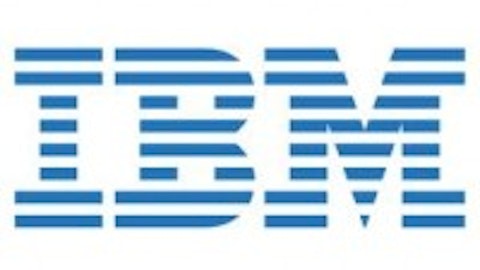
Supply, drugs, and drought could hurt results near-term
One obstacle to better profits would be an industry over supply. Recent U.S. Department of Agriculture (USDA) figures indicate that a record amount of pork could be produced this year. Their expectation for 10.7 million metric tons of production is the highest since at least 1970. Lower exports will also add to stocks. Large buyers, like China and Russia, have restricted purchases because of their aversion to ractopamine, a feed additive used in the U.S. This policy was an influential factor in a 14% reduction in American pork exports for the first two months of this year.
Hog production returns will also be pressured by a pass-through of higher feed costs. Drought conditions in the U.S. last summer caused sharp increases in grain feed prices that now seem to be influencing results. Smithfield Foods, Inc. (NYSE:SFD) saw its hog raising cost jump 7% from last year and soar 18% from 2011. They expect costs to remain at an elevated level until near the end of the year.
Cheap corn and solid demand could make this a cheap stock
While the industry’s short-term profit picture looks pretty bearish, further out, the outlook might be more sanguine. If the USDA’s expectations for a better corn crop are realized, it could be extremely beneficial to Smithfield Foods, Inc. (NYSE:SFD)’s bottom line. The government agency believes this year’s corn inventories could double as farms increase their harvest 31% to 14.1 billion bushels. In anticipation, corn futures have already tumbled about 25% from a record price of $8.49 a bushel set in August of last year. With a decent summer growing season, a continued drop in corn prices could significantly boost the company’s profitability.
Smithfield may also help demand by taking care of its ractopamine problem. The company said it will soon raise half of its hogs on feed that does not contain the drug. Two plants, which handle 43,000 hogs a day or about 10% of the U.S. industry, are already ractopamine-free and the company said it would convert a third plant on June 1.
Even after a nice rise over the last year, Smithfield Foods, Inc. (NYSE:SFD)’s stock price might be appealing for the long-term. Based on a cash earnings times market capitalization multiple valuation, the company’s reasonable business value looks to be around $31 a share. This assumes a more normalized operating environment with annual sales of around $13.4 billion, cash earnings of $396 million at a 2.96% cash profit margin and a multiple of 11x, relative to the company’s historical mid-2000’s margin of about 2.49% and an 11x to 12x multiplier range.
Comparison with other peer pork players
Tyson Foods, Inc. (NYSE:TSN) is one of the world’s largest processors and marketers of chicken, beef, and pork. The company has over $30 billion in annual sales with 40% of them beef related, 36% related to chicken, and around 15% to pork. The company reported that its latest quarter sales were around $8.42 billion with cash earnings of $162 million at an 1.92% margin, versus sales of $8.27 billion and cash earnings of $220 million at a 2.66% margin in the prior-year period. Increased feed costs and product supply/demand imbalances contributed to the reduced profitability.
Tyson Foods, Inc. (NYSE:TSN)’s market price looks pretty close to fair value. With estimated annual sales around $34 billion, cash earnings of $948 million at a normalized 2.79% margin, the company’s reasonable intrinsic value looks around $25 a share based on a 9.5x multiple. On a historical basis, the company has traded in the 9x to 10x multiple range with around a 2.30% margin in the mid-2000’s.
The company’s lower multiple, relative to Smithfield’s, probably relates to its size. Tyson Foods, Inc. (NYSE:TSN)’s scale and diversification may be thought to limit an ability to leverage good times into significantly above average profits.
Hormel Foods Corporation (NYSE:HRL) started as a processor of meat and food products, but has transitioned into more of a manufacturer and distributor of branded consumer items rather than commodity fresh meats. The company’s consumer product emphasis has allowed it to maintain amazingly consistent gross margins. Besides a few outlier quarters with relatively minor up and down variances, Hormel’s quarterly gross margins have been in the 16% to 16.7% range since 2009.
The market has rewarded Hormel Foods Corporation (NYSE:HRL)’s consistency with an optimistically priced stock. Based on estimated annual sales of around $8.6 billion, cash earnings of $522 million at a 6.1% margin, and a market multiple of between 16x and 18x, the company’s fair intrinsic value looks to be around $32 to $35 per share. In comparison, the company tended to trade with a 15x to 16x multiple range in the past and have around a 6.6% cash earnings margin.
The market premium given to Hormel Foods Corporation (NYSE:HRL)’s consumer brand strategy has not gone unnoticed. Both Smithfield and Tyson are taking similar steps to increase their offering of value-added consumer products.
Conclusion
Smithfield Foods, Inc. (NYSE:SFD) might be facing some serious near-term difficulties. A possible over supply of product, weakened demand, and higher feed cost will likely pressure profits. But, the company’s future could be a lot brighter if corn prices retreat and demand steadies. Though it might take some patience, this hog producer might serve up further share gains when things start turning its way.
The article Will Patience With This Pork Producer Payoff? originally appeared on Fool.com and is written by Bob Chandler.
Bob Chandler has no position in any stocks mentioned. The Motley Fool has no position in any of the stocks mentioned. Bob is a member of The Motley Fool Blog Network — entries represent the personal opinion of the blogger and are not formally edited.
Copyright © 1995 – 2013 The Motley Fool, LLC. All rights reserved. The Motley Fool has a disclosure policy.


